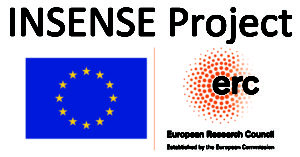Weaver, van Zoest, & Hickey (in press). A temporal dependency account of attentional inhibition in oculomotor control. Neuroimage. <link>
We used concurrent electroencephalogram (EEG) and eye tracking to investigate the role of covert attentional mechanisms in the control of oculomotor behavior. Human participants made speeded saccades to targets that were presented alongside salient distractors. By subsequently sorting trials based on whether the distractor was strongly represented or suppressed by the visual system – as evident in the accuracy (Exp. 1) or quality of the saccade (Exp. 2) – we could characterize and contrast pre-saccadic neural activity as a function of whether oculomotor control was established. Results show that saccadic behavior is strongly linked to the operation of attentional mechanisms in visual cortex. In Experiment 1, accurate saccades were preceded by attentional selection of the target – indexed by a target-elicited N2pc component – and by attentional suppression of the distractor – indexed by early and late distractor-elicited distractor positivity (Pd) components. In Experiment 2, the strength of distractor suppression predicted the degree to which the path of slower saccades would deviate away from the distractor en route to the target. However, results also demonstrated clear dissociations of covert and overt selective control, with saccadic latency in particular showing no relationship to the latency of covert selective mechanisms. Eye movements could thus be initiated prior to the onset of attentional ERP components, resulting in stimulus-driven behaviour. Taken together, the results indicate that attentional mechanisms play a role in determining saccadic behavior, but that saccade timing is not contingent on the deployment of attention. This creates a temporal dependency, whereby attention fosters oculomotor control only when attentional mechanisms are given sufficient opportunity to impact stimuli representations before an eye movement is executed.
Read More